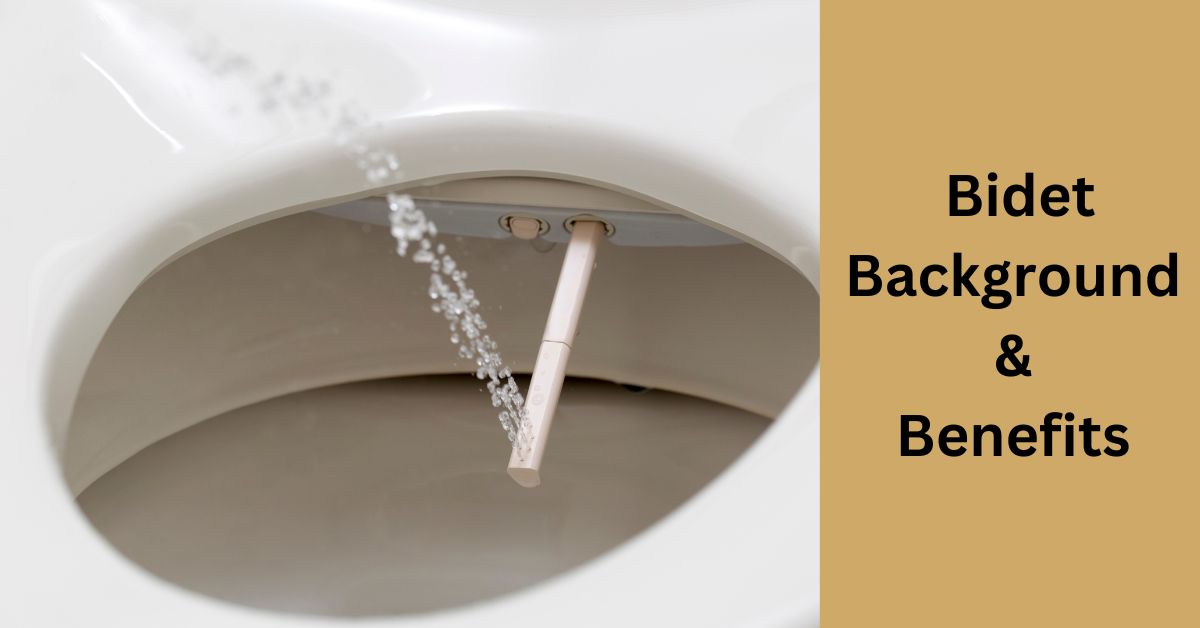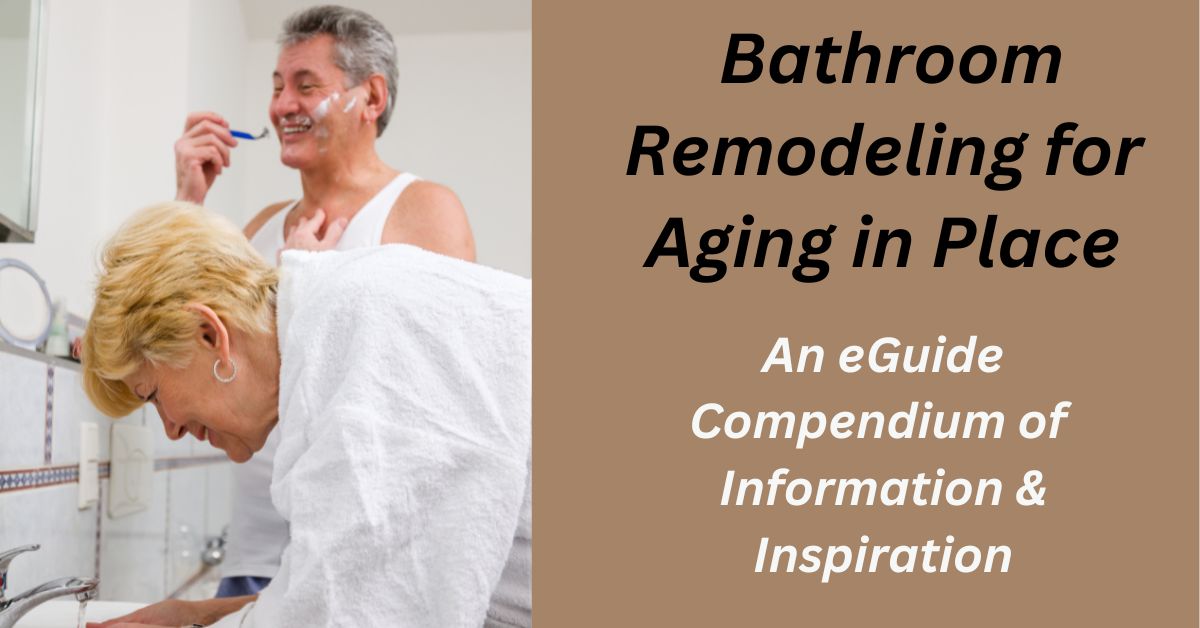Table of Contents
Note: If you came to this post on bidet benefits through a random search, please click on this parent page and our home page for more context.
Bidet – Background & Benefits
In a remodeling scenario, bidets are a highly recommended addition to any bathroom. They are particularly recommended in an aging-in-place scenario, for reasons we explore here.
The bottom line (pun intended!) with the bidet is that it has significant health benefits for everyone. This is especially true of women and seniors. After all, what could be more natural than using water to wash “down there.”
Bidet History
Let’s start with a little bidet history.
Bidets actually predate the American Revolution. But they are only now gaining some market acceptance in the US
It is a little surprising that in this land of innovation and the adventurous spirit, the bidet is still relatively little known
However, they are in wide use in various forms in bathrooms around the rest of the world (by some estimates 80% of it). This includes countries such as France, Spain, Greece, Italy, Portugal, Turkey, Egypt, Lebanon, Brazil, Argentina, Venezuela, Uruguay, India, Pakistan, and Japan,
So most of the rest of the world – about 80% of it by some estimates – likes to finish a call of nature by washing their nether regions with a stream of warm water from a bidet. They find it more thorough, faster, and gentler than wiping with toilet paper.
So What is a Bidet, Anyway?
The French invented the bidet in the late 1600s as an aid to washing their rear ends. You pronounce the word bidet as “bee-day.” The word means “cob,” which is a type of short-legged horse.
It paints a mental picture of the action of straddling this piece of equipment to perform the desired ablution. Here is an image of a French bidet in use. And you can see that it is evocative of a horse.
At first, the bidet was found in the French bedroom as a complement to the chamber pot. It was chiefly in use by the French aristocracy. And in around 1750 they added a spray and hand pump to the device.
Eventually, both the chamber pot and bidet were moved out of the bedroom and were installed side by side in a separate bathroom. And from France, the bidet spread around most of the world.
And after a while, the bidet spread from France to most of the rest of the world. But it didn’t catch on in the US, or other Anglo countries either.
Why Did the US Market Resist the Bidet?
There are two theories as to why the bidet did not gain acceptance in the US. One is cultural. The other is practical.
The Cultural Theory for Bidet Resistance
This line of thought is that the Americans, like the British, didn’t like the idea of the bidet because it was French and somehow not to be trusted. It also had a somewhat lewd association with French brothels.
On top of that, people get used to what they have always been doing. So there is a natural resistance to making a change. Besides, if people believe it is perfectly sanitary to use toilet paper, why would they do anything else?
The Practical Reason for Bidet Resistance
Historically, the bidet and toilet sat side by side in the bathroom. And this is a problem because the typical American bathroom is quite small and so there is no room for this arrangement.
On top of that, the standalone bidet required its own separate plumbing (both hot and cold water supply lines and waste drain). This, combined with the cost of the porcelain fixture, made it quite expensive to install a bidet, even if there was room for it.
Here is what that setup looks like:
Bidet Game Changers
The growing market for bidets in the US is being driven by a number of factors, including technology, design, the environment, health, and the growing number of seniors. These amount to market game-changers.
Bidet Design and Technology
The design revolution, mainly pioneered in Japan, came with the incorporation of the toilet and the bidet in a single unit. This overcame the practical objections of taking up too much space and requiring separate plumbing. The integrated toilet-bidet combo units are self-contained and can even warm the water for washing.
These combo units are either fully merged or come in the form of a bidet seat that is fitted to an existing toilet. And, of course, this combo or bidet seat arrangement pretty much removes any bidet resistance based on cost.
Here is a side-by-side look at a bidet-type toilet seat on the left and an integrated bidet/toilet on the right.
So this revolution in design solved both the space and cost objections to the standard side-by-side toilet and bidet arrangement.
Bidets and Environmental Sensitivity
Americans account for about 4% of the population of the world but more than 20% of the world’s tissue paper consumption. This translates into around 37 billion rolls of toilet paper and around 15 million trees for us to wipe our butts with. And this does not take into account the energy and water that are used to process the lumber into toilet paper.
We have seen estimates that were we to use bidets, toilet paper use would fall to around 10% of this. People who use bidets use very little paper. And this is just to pat themselves dry. So all of this would “save the trees” and a lot of money too.
Bidets, Hygiene, and Health
As to hygiene and health, there is pretty much universal agreement that, while using toilet paper is “barely” acceptable, the bidet is much better.
Here’s a thought experiment: If you were to get your pet dog’s poop on your fingers, would you wipe it off or wash it off? You really don’t even have to think about an answer.
There is no doubt that you would wash it off with water rather than wipe or rub it off with dry paper. So if it were our own human waste, we would give the same answer.
This thought experiment makes an incontrovertible case for the bidet. It is a much more hygienic way to go. And it also prevents the irritation, rashes, and infections that you can get from wiping with toilet paper.
In fact, bidet washing is helpful in the relief of some of the problems and symptoms related to hemorrhoids, incontinence, itching, tender skin, and some feminine complaints.
And, contrary to some opinions, you do not need to use soap in washing these areas. The constant use of soap can cause mucosal skin to dry out and in turn, lead to infection. The medically approved way to clean this area is simply to use warm water.
Bidets for Women
Bidets work for everyone, male or female, for obvious reasons, including no more skid marks on underwear. But they are particularly good for women in areas of feminine hygiene. This is especially so during menstruation, pregnancy, and postpartum.
Bidets for Seniors
The bidet is now gaining greater acceptance among our growing population of seniors, including their caregivers.
To describe the benefits of bidets for seniors we need to get a little graphic, even though we are discussing the routine excretory functions that we all live with. So let’s get going.
As we age these bathroom-related functions can get more difficult to perform and manage. But here we can see how the bidet can be helpful and solve problems.
- Related post: Aging in Place
- Related post: Bathrooms for the Elderly
Bidets Help Manage Impaired Balance and Mobility
As joints stiffen and muscles weaken we can lose balance. This can make going to the toilet difficult and even dangerous. For example, there are many reported instances of elderly people twisting around to wipe themselves, losing balance, toppling off the toilet, and getting injured.
But if you use a bidet, you can reduce the chance of this kind of accident. With a bidet seat add-on or integrated bidet-toilet, there is little or no wiping needed. And you do not need to keep standing up and sitting down.
So, for seniors, the bidet makes this aspect of personal hygiene safer and easier. And for an extra level of safety, you add rails and grab bars.
Bidets and Arthritis
With arthritis comes reduced manual dexterity. This can make what was once a simple job of wiping one’s rear end with paper difficult. This in turn means that it doesn’t get done right.
Just take a look at these poor arthritic hands and imagine how hard it would be for them.
But the modern bidet just about eliminates having to wipe. And bidets come with controls that arthritic hands can operate pretty well. And many have remote controls that can make it even easier.
So, with bidets, the most you have to do with toilet paper is just “patting dry” not wiping.
Bidets Help Manage Skin Infections and Irritations
With increasing age comes thinning skin. This includes the skin of the perineum. When you wipe yourself with paper after using the toilet, you can irritate and chafe this area. And if poop and pee are left behind on the skin after wiping, this can lead to skin infections. It also adds to the risk of urinary tract infections (UTIs), for women especially.
So enter the bidet, which, because of its gentle and warm water wash, reduces the need to wipe, if at all. This helps reduce risks of infection and irritation when you wipe. And if you do use toilet paper you just pat the area dry. You don’t wipe it.
Bidets Help Manage Diarrhea, Hemorrhoids, and Incontinence
Incontinence: Seniors, especially women, tend to suffer from incontinence. When urine is left on the skin, an infection can follow. Bidets can help with this condition because it allows for the convenient and frequent washing of this area of the body without having to take a shower.
Diarrhea: Similarly, with incontinence, seniors become more susceptible to diarrhea as a result of the reduced efficiency of their digestive systems. So bidets can be very helpful with this, in much the same way as with incontinence.
Hemorrhoids: For seniors, hemorrhoids tend to arise as a result of constipation which also comes with aging digestive systems. This makes wiping very painful and difficult. So bidets can help with this in the same way as with incontinence and diarrhea.
Bidets and Overall Hygiene, Bathing, and Safety
In the ordinary course of life, one might use a bidet several times per day, especially if a woman. Such a routine use of a bidet can reduce the number of showers one needs to take. This is because those parts of the body that most need washing are frequently washed by the bidet.
A less frequent need to use the shower automatically increases shower safety because it reduces the risk of falls associated with showers. And it is the shower that is the scene of most bathroom accidents.
In the ordinary course of life, one might use a bidet several times per day, especially if a woman. Such a routine use of a bidet can reduce the number of showers one needs to take. This is because those parts of the body that most need washing are frequently washed by the bidet.
A less frequent need to use the shower automatically increases shower safety because it reduces the risk of falls associated with showers. And it is the shower that is the scene of most bathroom accidents.
Helping seniors with toileting and bathing is one of the main areas of responsibility for the caregiver. Seniors needing this assistance do not like it much. Nobody likes having their nether regions cleaned by a stranger. Besides, it is costly, because the caregiver has to be paid.
However, having a bidet and being able to manage it oneself can really reduce the need for this caregiving service. Consider this as a practical cost-saving consideration when installing a bidet.
By the same token, if the caregiver is needed to help with toileting in any case, having a bidet to work with can make the job a great deal easier and safer. This is because It reduces the need to bathe the senior in the tub or shower.
Bidets and the Comfort-height Toilet
If you are considering a bidet toilet seat, be sure to pair it with a comfort-height toilet. This is much more comfortable than a standard-height toilet, especially for seniors. And we recommend the elongated seat for additional comfort.
- Related post: Toilets
What Kind of Bidet Should I Get?
First, we recommend against going for the side-by-side, separate toilet and bidet arrangement. Even if you have the budget and the space for it, why spend the money and waste the space? You can use it for something more useful, like storage.
In any case, having everything in one place with a combo setup just makes a lot more sense.
So the kind of bidet-toilet combo you get really depends on your budget. You can get the basic toilet seat bidet, you can get a more elaborate one, or you can go for a smart toilet/bidet combo.
And, again depending on your budget, the modern bidet can come with all kinds of bells and whistles. You are not limited to the basic cold water wash function. Bidet features can include some pretty nice spa-type features, depending on the model and whether it is a basic toilet seat add-on, or an integrated toilet/bidet combo unit.
Here are some things to look for (some of these features will require an electrical outlet nearby):
- A warm water feature with adjustable pressure and adjustable temperature. Some of these units will have heating coils. Others will have a reservoir tank.
- An air dryer, preferably with warm air.
- Adjustable temperature heated seat
- Washing nozzles. These can be massaging or oscillating. And you can even get an enema wash.
- A control panel. This can be attached or it can be wall mounted with a remote control.
- Deodorizer
- Night light
We cover the options with some examples in a related post.
- Related post: Bidet-Toilet Combo
Conclusion
In our opinion, the bidet is a great addition to any bathroom. Bidet health benefits are for all of us, especially for women, and as we get older. And one should not forget that it can be a valuable addition to one’s home, both as an appliance and for its added value to real estate.
- Related post: Bathroom Layout
- Related post: Bathroom Design Trends





Leave a Reply